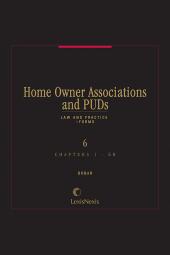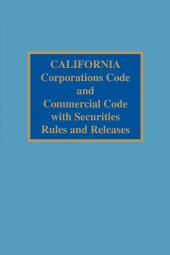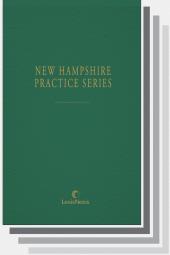Home Owner Associations and Planned Unit Developments Law and Practice: Forms
Select a format
 International Order Inquiry
International Order Inquiry
Select subscription type
Terms & conditions
Subscribers receive the product(s) listed on the Order Form and any Updates made available during the annual subscription period. Shipping and handling fees are not included in the annual price.
Subscribers are advised of the number of Updates that were made to the particular publication the prior year. The number of Updates may vary due to developments in the law and other publishing issues, but subscribers may use this as a rough estimate of future shipments. Subscribers may call Customer Support at 800-833-9844 for additional information.
Subscribers may cancel this subscription by: calling Customer Support at 800-833-9844; emailing customer.support@lexisnexis.com; or returning the invoice marked "CANCEL".
If subscribers cancel within 30 days after the product is ordered or received and return the product at their expense, then they will receive a full credit of the price for the annual subscription.
If subscribers cancel between 31 and 60 days after the invoice date and return the product at their expense, then they will receive a 5/6th credit of the price for the annual subscription. No credit will be given for cancellations more than 60 days after the invoice date. To receive any credit, subscriber must return all product(s) shipped during the year at their expense within the applicable cancellation period listed above.
The total price includes the product(s) listed in the Order Form and any Updates for a limited period (minimum period of 30 days) after the order is placed ("Order Window"). Shipping and handling fees are not included in the grand total price.
All shipments may be returned, at subscribers' expense, for full credit of the Price within 30 days of receipt.
Shipments may not be returned, and no credits will be issued, more than 30 days after receipt.
After the Order Window, subscribers will receive notice of Updates along with the then-current grand total price and order process as Updates become available. Subscribers will only be shipped those Updates they specifically request.
Product description
View a sample of this title using the ReadNow feature
Comprehensive, practical coverage of the legal and economic aspects of home owner associations and planned unit developments.
eBooks, CDs, downloadable content, and software purchases are noncancelable, nonrefundable and nonreturnable. Click here for more information about LexisNexis eBooks. The eBook versions of this title may feature links to Lexis+® for further legal research options. A valid subscription to Lexis+® is required to access this content.
Table of contents
Volume 6 Table of Contents
PART I INTRODUCTION AND BACKGROUND
CHAPTER 1 INTRODUCTION AND SCOPE OF THE TREATISE
1.01 Introduction
1.02 Scope and Organization of the TreatiseCHAPTER 2 HISTORICAL DEVELOPMENT AND BASIC CONCEPTS
2.01 Introduction
2.02 Planned Unit Developments and Home Owner Associations in Context:
Traditional Land Use Regulations and Land Ownership Regimes
2.03 The Planned Unit Development’s Origins
2.04 Origins and Development of the Home Owner Association
2.05 Modern Planned Communities and Property Owners' Organizations: Definition by RegulationPART II CREATION AND MARKETING
CHAPTER 3 CREATION OF PLANNED UNIT DEVELOPMENTS
3.01 Introduction
3.02 Characteristics of PUDs
3.03 Creation of PUDs: State and Local Legislation
3.04 Validity of PUDsCHAPTER 3A EXPANDABLE AND PHASED PLANNED UNIT DEVELOPMENTS
3A.01 Introduction
3A.02 Types of PUDs
3A.03 Benefits of Separate Phases
3A.04 Disadvantages of Separate Phases
3A.05 Lender Considerations
3A.06 Uniform Common Interest Ownership Act
3A.07 Agency Regulations
3A.08 Limitations Arising from Marketing Activities
3A.09 DocumentsCHAPTER 4 CREATION OF THE HOME OWNER ASSOCIATION-BASIC DOCUMENTATION
4.01 Preliminary Considerations
4.02 Forms of Multiunit Ownership Compared
4.03 Constituent Documents of the Home Owner Association
4.04 Multi-Phase Developments
4.05 Add-On Documents for Expandable Associations
4.06 Party Wall Agreements
4.07 Common Errors and How To Cure ThemCHAPTER 4A RETIREMENT COMMUNITIES
4A.01 The Fair Housing Amendments Act and Housing for Retirees
4A.02 Fair Housing Acts in Selected States
4A.03 Fair Housing Complaint FormsPART III OPERATIONAL ASPECTS
CHAPTER 5 FINANCING
5.01 Introduction
5.02 Types of Loans
5.03 Sources of Loan Funds
5.04 Structuring Interim Loan
5.05 Checklist of Points for Borrower’s Counsel to Negotiate for Interim Loan
5.06 Interim Loan Documentation
5.07 Checklist of Closing Documents for Interim Loan
5.08 Lender's Property Insurance Requirements
5.09 Lender's Title Insurance Requirements
5.10 Lender's Requirements for Declaration of Covenants and Restrictions and Other Underlying Documentation
5.11 Permanent Financing Secured Only by Individual Units
5.12 Loans to Associations
5.13 Leasehold Home Owners Associations and PUDs
5.14 Financing of Commercial PUDs
5.15 Lenders as Sponsors
5.16 Financing of Troubled Projects and Loan Workouts
5.17 Opinion of Borrower's Counsel
5.18 Form of Commitment Letter-Selected Provisions
5.19 Form of Assignment of Rights Under Offering Plan
5.20 Form of Acknowledgment by Unit Purchasers of Assignment to Interim Lender
5.21 Contract of Sale Clause Subordinating Unit Purchaser’s Rights to Interim LenderCHAPTER 5A WORKOUTS AND DISTRESSED DEVELOPMENTS
5A.01 Identifying Projects in Distress
5A.02 Lender's Response: Settlement, Enforcement or Both
5A.03 Incentives for Lender to Agree to a Workout
5A.04 Lender's Reporting Obligations
5A.05 Loan Modifications
5A.06 Traps for Lenders in Troubled Loans and How to Avoid Lender Liability
5A.07 Deeds in Lieu of Foreclosure
5A.08 Sales in Lieu of Foreclosure
5A.09 Sale of Loans by Lender
5A.10 Foreclosure
5A.11 Bankruptcy
5A.12 Role of the Home Owner Association
5A.13 Offering Plans
5A.14 Income Tax Planning
5A.15-5A.l9 [Reserved]
5A.20 FormsCHAPTER 6 FEDERAL REGULATION
6.01 Introduction
6.02 Interstate Land Sales Full Disclosure Act
6.03 Truth-in-Lending Requirements
6.04 The Real Estate Settlement Procedures Act
6.05 Condominium and Cooperative Conversion Protection and Abuse Relief Act of 1980
6.06 Securities Regulations
6.07 Federal Regulation of Unfair or Deceptive Trade Practices
6.08 The Magnuson-Moss Warranty-Federal Trade Commission Improvement Act
6.09 Fair Housing Amendments Act of 1988
6.10 Federal Regulation of Asbestos and Asbestos Containing Material
6.11 Regulation of Direct Broadcast Satellite Dishes
6.12 Federal Employment Taxes
6.13 Federal Taxation of Home Owners AssociationsCHAPTER 6A ENVIRONMENTAL LIABILITY
6A.01 Introduction
6A.02 Liability Under Common Law
6A.03 Liability Under Federal Law
6A.04 Liability Under State Law
6A.05 Special Regulation of Wetlands
6A.06 Insurance Coverage
6A.07 Environmental AuditsCHAPTER 6B ANTIDISCRIMINATION LAWS
6B.01 Introduction
6B.02 The Thirteenth Amendment; Civil Rights Act of 1866
6B.03 Executive Order 11063
6B.04 Civil Rights Act of 1964
6B.05 Civil Rights Act of 1968
6B.06 Rehabilitation Act of 1973
6B.07 Home Mortgage Disclosure Act of 1975
6B.08 Equal Credit Opportunity Act
6B.09 Fair Housing Amendments Act of 1988
6B.10 HUD Rules and Regulations Implementing the Fair Housing Amendments Act of 1988
6B.11 The Americans with Disabilities Act of 1990
6B.12 FormsVolume 6A Table of Contents
PART III OPERATIONAL ASPECTS (Cont’d)
CHAPTER 7 OPERATION AND MANAGEMENT
7.01 Introduction
7.02 The Uniform Planned Community Act
7.03 The Uniform Common Interest Ownership Act
7.04 Maryland Homeowners Association Act
7.05 Membership in the Home Owners Association
7.06 Powers of the Home Owners Association
7.07 Documentation
7.08 Establishment of the Board of Directors
7.09 Association Officers
7.10 Permanent Functioning of the Board of Directors
7.11 Illustrative FormsCHAPTER 7A REPRESENTING THE HOME OWNER ASSOCIATION
7A.01 Home Owner Associations Require Guidance in Community Management
7A.02 Scope of Representation Depends on Association's Needs and Objectives
7A.03 Representation of a Home Owner Association Requires Thorough Knowledge of Underlying Documents
7A.04 Powers and Duties of Association's Board of Directors Determined by Community Documents and Statutes
7A.05 Board Has Authority to Create and Enforce Rules and Restrictions
7A.06 Fair Housing Act Prohibits Discrimination
7A.07 Association May Be Exposed to Liability for its Acts or Omissions
7A.08 Developer Must Transfer Control of Community to Association
7A.09 Master, Umbrella and Community Associations May Have Independent Community Documents
7A.10 Violence Against Board Members or Officers
7A.11 Associations and Free Speech
7A.12 Nuisance and Community AssociationsCHAPTER 7B TELECOMMUNICATIONS AND HOMEOWNER ASSOCIATIONS
7B.01 Introduction
7B.02 Bulk Rate Cable TV and Telecommunications Service Contracts
7B.03 Telecommunications Act/FCC Rules Preventing Enforcement of Restrictive Covenants that Restrict or Prohibit Small Video Antennas and Satellite Dishes
7B.04 ConclusionCHAPTER 8 ENFORCEMENT OF COVENANTS AND RESTRICTIONS
8.01 What Is a Covenant?
8.02 A Covenant Is a Servitude Upon the Land
8.03 Recorded Covenants Are Crucial to Many Common Interest Communities
8.04 Restrictive Covenants Must Be Enforceable in Order to Be Effective
8.05 The Declaration of Protective Covenants, Conditions, Easements, and Restrictions Functions as the Community’s Constitution
8.06 Restrictive Covenants Address a Variety of Issues
8.07 Historical Development of Covenants that Run with the Land
8.08 What Is the Test for Determining When a Covenant Touches and Concerns the Land?
8.09 There Must Be a Common Plan of Development
8.10 Restrictive Covenants that Violate Civil Rights Laws and Other Statues Are Not Enforceable
8.11 Historically Affirmative Covenants Were Controversial
8.12 How Do Courts Interpret Covenants?
8.13 Some Courts Have Applied the Business Judgment Rule When
Reviewing the Actions of a Home Owners Association
8.14 Unreasonable Enforcement of Covenants Can Lead to Substantial Liability Being Imposed on an Unincorporated Home Owners Association and Its Members
8.15 Who Has Standing to Enforce Covenants and Restrictions?
8.16 Voluntary Home Owners Associations May Face Difficulties in Enforcing Covenants
8.17 The Enforcement of Some Restrictive Covenants May Be Precluded by Energy Conservation Statutes
8.18 Restrictive Covenants Regarding Antennas and Satellite Dishes Must Comply with FCC Rules
8.19 Covenants Restricting Religious Uses Are Generally Enforceable
8.20 Covenants Frequently Prohibit or Limit the Posting of Signs
8.20A Flags
8.21 Covenant Granting Broad Discretion to an Architectural Review Committee Are Generally Enforced
8.22 Restrictions Prohibiting Mobile Homes Are Often Interpreted to Preclude Manufactured Housing
8.23 Covenants Allowing Only Residential Uses or Banning Commercial Uses May Not Preclude Child Care Operations
8.24 Covenants Frequently Prohibit Nonresidential or Business Uses
8.25 Group Homes May Be Barred by Covenants Allowing Only Single-Family Use
8.25A Vehicle and Parking Restrictions
8.25B Guest Restrictions and Corporate Ownership
8.25C Smoking Bans
8.25D Leasing
8.26 There Are Several Remedies Available for Violating Restrictive Covenants
8.27 Defenses to Enforcement of Covenants
8.28 Non-Judicial Enforcement and Dispute Resolution
8.29 Covenants Usually Address Attorneys Fees
8.30 Home Owners Associations Face Possible Tort Claims After Suing Home Owner Members
8.31 Sample Provisions for Declaration of Covenants and Restrictions
8.32 Sample NoticesCHAPTER 9 ENFORCEMENT OF MONETARY OBLIGATIONS
9.01 The Need for Assessments
9.02 Enforceability of Assessments Under Common Law
9.03 Enforceability of Assessments Under Statutes
9.04 Review of the Association's Powers
9.05 Uniform Enforcement Guidelines
9.06 Interest, Late Charges, and Attorneys' Fees
9.07 Application of Payments
9.08 Usury
9.09 Suspension of a Delinquent Owner's Privileges
9.10 The Federal Fair Debt Collection Practices Act
9.11 Initial Demands for Payment
9.12 Acceleration of Assessments
9.13 Partial Payments and Bad Checks
9.14 Placing a Lien on the Property
9.15 Litigation to Foreclose the Lien and for Money Judgment
9.16 Bankruptcy of the Debtor and Its Effect on Collection
9.16A Bank Foreclosures
9.17 FormsCHAPTER 9A DEVELOPER LIABILITY: TORT CLAIMS; EXPRESS AND IMPLIED WARRANTIES; WARRANTY PROGRAMS
9A.01 Claims Against Developers Generally Involve Alleged Construction Defects, Marketing Misrepresentations, or Breach of Fiduciary Duties to Unit Owners
9A.02 Standing to Assert Claims Against Developers
9A.03 Tort Claims for Construction Defects
9A.04 Implied Warranties Under Common Law
9A.05 Statutory Warranties
9A.06 Express Warranty Programs
9A.07 Liability During Development and the Period of Developer Control
9A.08 Damages and RemediesCHAPTER 10 STANDING TO SUE AND LIABILITY OF THE HOME OWNER ASSOCIATION AND ITS MEMBERS
10.01 Capacity to Sue Versus Standing to Sue
10.02 The Common Law Did Not Allow Unincorporated Associations to Sue or Be Sued
10.03 Many Jurisdictions Have Statutorily Altered the Common Law Regarding Unincorporated Associations
10.03A The Association Documents May Limit Standing
10.04 The Doctrine of Associational or Representational Standing Permits Associations to Pursue Claims in Federal Court
10.05 When Can the Defendant or the Court Raise the Issue of Standing?
10.06 Issues Concerning Standing Affect Potential Liability
10.07 An Unincorporated Association’s Standing to Sue and Be Sued
10.08 The Uniform Common Interest Ownership Act Does Not Preclude Suit Against the Association by a Unit Owner
10.09 The Uniform Unincorporated Nonprofit Association Act Addresses Standing and Liability Issues
10.10 When Does an Association Have Standing to Sue the Developer?
10.11 The Association Should Have Standing to File a Declaratory Action Regarding Its Governing Documents
10.12 An Association May Lack Standing if Ownership of Real Estate Is Necessary to File Suit
10.13 Does the Association Have Standing to Enforce Restrictive Covenants?
10.14 A Class Action May Be an Option if the Association Lacks Standing to Sue
10.15 When Does a Home Owners Association Have Standing to Pursue Zoning Matters?
10.16 An Association Does Not Have Standing to Contest Assessments of the Units by Taxing Authorities
10.17 An Association May Not Have Standing Under the Interstate Land Sales Full Disclosure Act
10.18 An Association May Have Standing to Pursue a RICO Claim
10.19 The Individual Home Owner Can Incur Liability with Respect to the Common Areas
10.20 A Member Has Potential Liability under Contract Law
10.21 The Individual Home Owner May Be Liable for the Unincorporated Association’s Improper Conduct of Its Business
10.22 Liability of the Home Owner Association
10.23 The Land Trust May Reduce the Risk of LiabilityCHAPTER 11 CASUALTY, LIABILITY AND TITLE INSURANCE
11.01 Introduction
11.02 Association Insurance Coverage
11.03 Individual Home Owner Coverage
11.04 Officers and Directors' Insurance
11.05 Fannie Mae Insurance Requirements
11.06 Uniform Planned Community Act
11.07 Uniform Common Interest Ownership Act
11.08 Effect of the American Land Title Association Policy Form
11.09 ClaimsCHAPTER 11A PROBLEMS OF LONG-STANDING HOMEOWNER ASSOCIATIONS
11A.01 Introduction
11A.02 Need for Long-Range Planning
11A.03 Restructuring the Long-Standing Homeowner Association
11A.04 Keeping the Long-Standing Association Adequately Insured
11A.05 Maintenance and Repairs
11A.06 Embezzlement
11A.07 Elderly and Disabled Residents
11A.08 Maintaining Security
11A.09 Additional Checklists and Sample Forms
PART IV TAXATIONCHAPTER 12 INCOME TAX TREATMENT OF THE ASSOCIATION
12.01 Introduction
12.02 The Tax Classification of the Organization
12.03 Taxation of the Homeowner Association
12.04 Internal Revenue Code, Regulations and FormsCHAPTER 13 INCOME TAX TREATMENT OF THE INDIVIDUAL OWNER
13.01 Income Tax Deductions Available to the Individual Owner
13.02 Sales and Exchanges
13.03 Nonrecognition Transactions
13.04 Tax Treatment of Installment SalesCHAPTER 14 REAL ESTATE TAX ASSESSMENT
14.01 Real Property Tax Assessment Principles
14.02 Real Estate Tax Treatment of the Association
14.03 Statutory Provisions Relating to Double Taxation
14.04 Real Estate Tax Treatment of the Participating Home Owner
14.05 Procedural Aspects of Real Estate Tax Review Proceedings
14.06 Real Estate Tax Representations of HOA and PUD Developers
PART V PROJECT TERMINATIONCHAPTER 15 DISSOLUTION OF THE PROJECT
15.01 What Law Determines the Consequences of Terminating the Project and Dissolving the Home Owners Association?
15.02 Termination Under the Common Interest Ownership Act and the Uniform Planned Community Act
15.03 Eminent Domain Under the Uniform Common Interest Ownership Act and the Uniform Planned Community Act
15.04 Eminent Domain in States Not Adopting Either Uniform Act
15.05 Termination Triggered by Destruction Under the Uniform Common Interest Ownership Act or the Uniform Planned Community Act
15.06 Condominium Statutes May Offer Guidance
15.07 Voluntary Termination of a Project
15.08 Model Nonprofit Corporation Act
15.09 Uniform Unincorporated Nonprofit Association Act
15.10 Involuntary Dissolution Due to Nonpayment of Fees or Filing of Reports with the State
TABLE OF CASES
INDEXVolume 6B Table of Contents
OmittedVolume 6C Table of Contents
Appendix B FNMA FORMS AND DOCUMENTATION
Appendix C HOMEOWNER ASSOCIATION AND PLANNED UNIT DEVELOPMENT OFFERINGS AND DECLARATIONSVolume 6D Table of Contents
Appendix C HOMEOWNER ASSOCIATION AND PLANNED UNIT DEVELOPMENT OFFERINGS AND DECLARATIONS (Cont’d)
 Lexis Nexis
Lexis Nexis 


